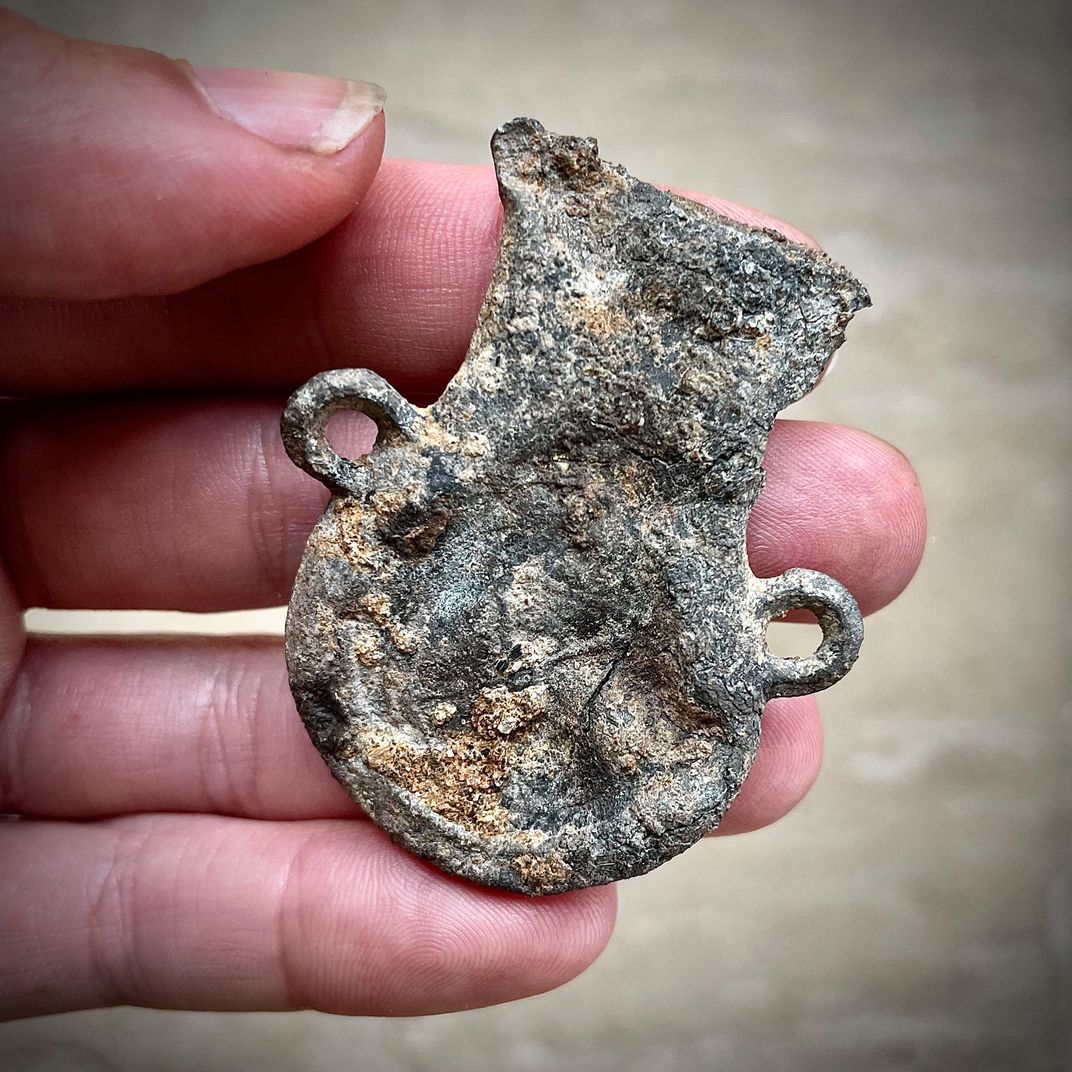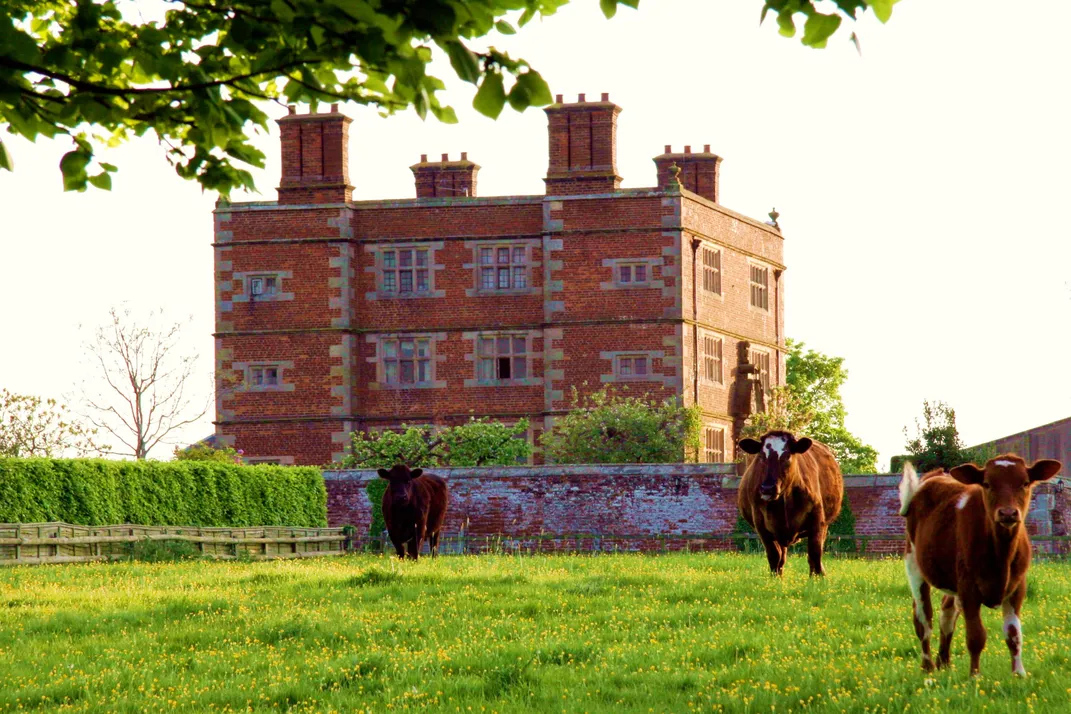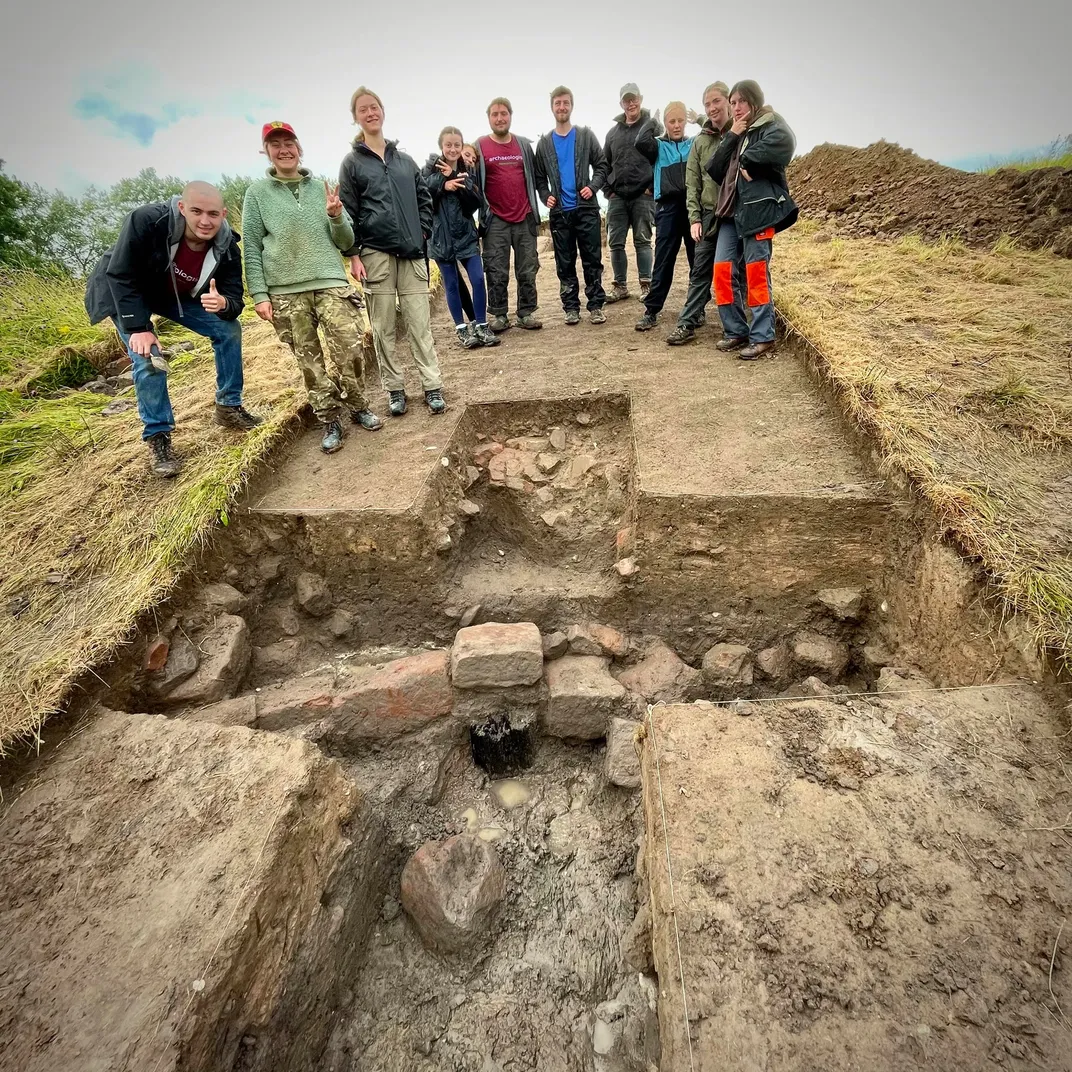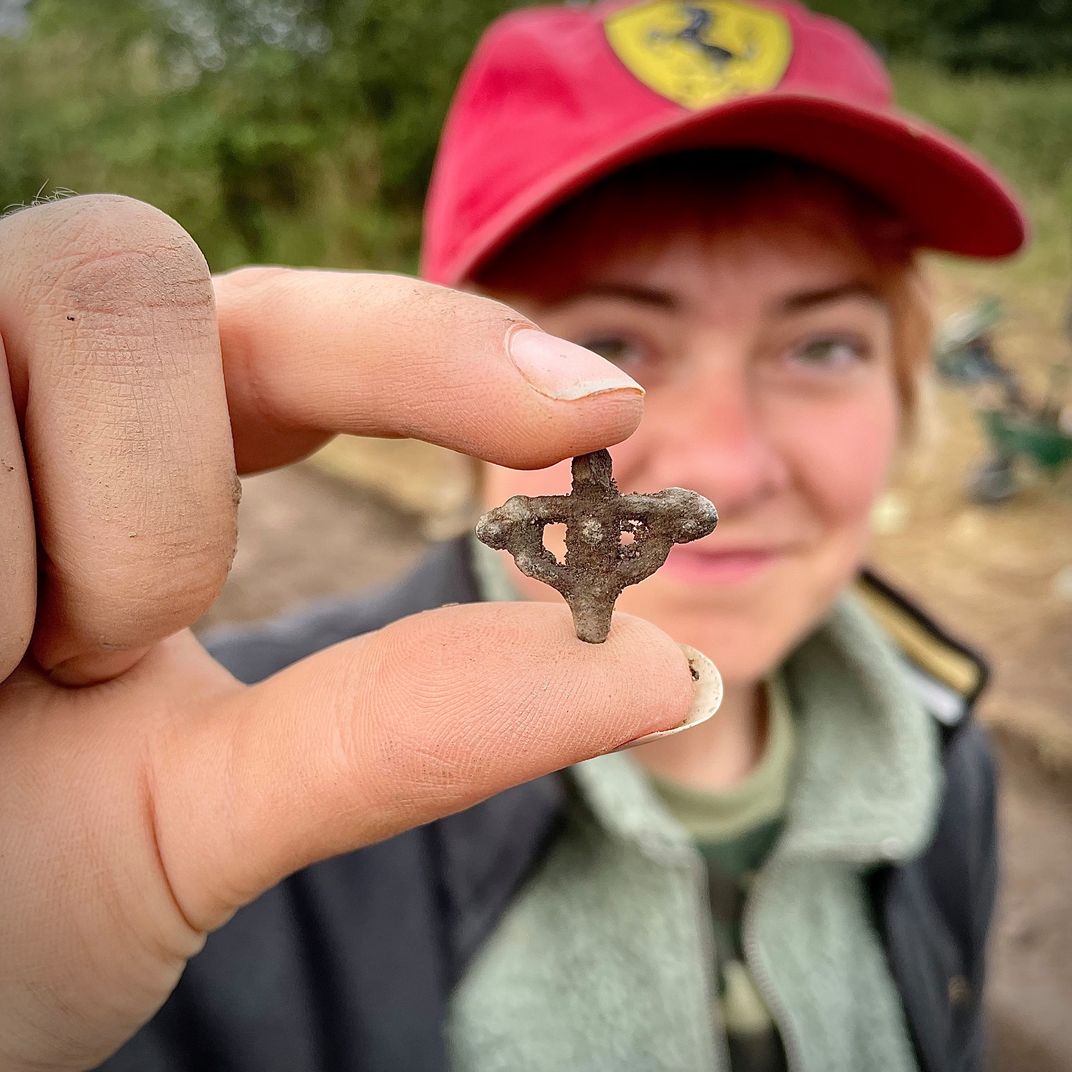Mysterious Mound at English Manor May Conceal Remains of Medieval Castle
Archaeologists at Soulton Hall have unearthed sandstone walls and trinkets likely left behind by religious pilgrims
:focal(740x987:741x988)/https://tf-cmsv2-smithsonianmag-media.s3.amazonaws.com/filer/14/ec/14ec5a5f-dd5a-444c-af2e-1cc042da2254/mound.jpeg)
The owners of stately Soulton Hall in Shropshire, western England, have long puzzled over a mysterious mound in their backyard.
As Barrie White reports for Whitchurch Herald, the Elizabethan estate bears evidence of human settlement stretching back thousands of years. Owner Tim Ashton and his family have often wondered what created the strange lump of earth in Soulton’s fields—and whether the mound could hold clues to the manor’s past.
“We’ve always had questions, my grandfather was born in the 1920s and always wondered what it was,” Ashton tells BBC News.
Now, ongoing excavations led by British archaeology firm Dig Ventures are offering the Ashtons some answers. Buried beneath the hill, researchers have discovered the remains of what appears to be a medieval castle.
“We found what we think might possibly be a castle on the mound,” lead archaeologist Nat Jackson tells BBC News. “… It’s very, very exciting.”
The newly discovered castle likely dates to between the 13th and 15th centuries. Students from Cardiff University worked with experts from Dig Ventures to excavate a sandstone wall and pieces of waterlogged timber that may have been part of a moat encircling the miniature fortress.
Speaking with Sue Austin of the Shropshire Star, Jackson says, “We think it was a small castle, which dominated the road to Wem,” a nearby village.
Soulton Hall’s central brick building was built in the 1600s and today houses a hotel and entertainment venue. But the land has been inhabited by wealthy members of English society since at least 1086, when Soulton was listed in the Domesday Book. (Per the United Kingdom’s National Archives, this detailed survey of England’s properties was undertaken at the behest of William the Conqueror, who took control of the country during the Norman Conquest of 1066.)
Previous archaeological research on Soulton’s grounds has revealed pieces of Neolithic flints dated to about 5,500 years ago, according to the manor’s website. Dig Ventures conducted an exploratory dig on the mound in 2019, but due to the Covid-19 pandemic, the team was only able to embark on a larger dig with student volunteers last month.
Other finds made at the site include pottery fragments and a medieval pilgrim’s badge—a tiny cross that likely bears a small figure of the crucified Jesus Christ. These small tokens or souvenirs would have been worn by Christian pilgrims as they traveled to places deemed holy by the Catholic Church.
Another volunteer recently unearthed a slightly flattened ampulla, or small vessel created in the style of Roman jugs used by pilgrims to carry holy water or oil.
“We think [the ampulla] dates to the 1300s, and when you look closely you can just about see a crossed shield on it,” says Dig Ventures in a Facebook post. “We wonder who it belonged to ...”
/https://tf-cmsv2-smithsonianmag-media.s3.amazonaws.com/accounts/headshot/nora.png)




/https://tf-cmsv2-smithsonianmag-media.s3.amazonaws.com/accounts/headshot/nora.png)